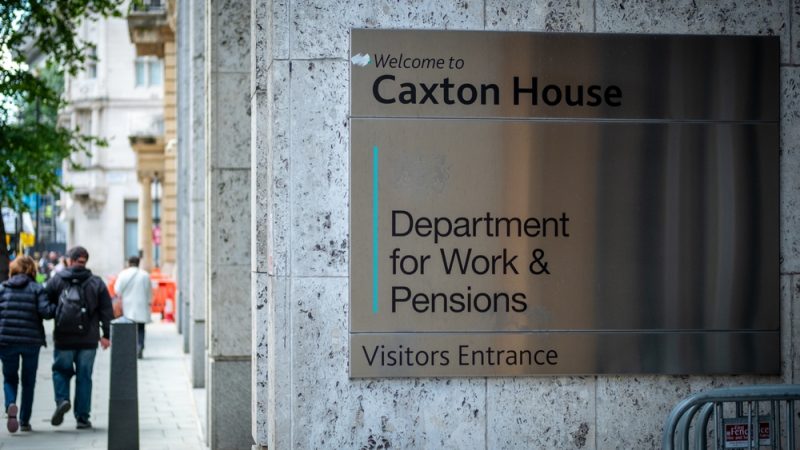
I don’t envy the frontbench. They inherited an appalling economic legacy, with public debt at almost 100% of Gross Domestic Product (GDP), a bond market traumatised by Liz Truss, and potentially a global trade war. At the same time, after 14 years of austerity public services are desperate for investment, and households continue to struggle with rising living costs.
With social security forming the largest part of public spending, it is an obvious target for government savings. I don’t doubt that ministers believe reforming disability benefits and getting more people into work is the right thing to do, it can absolutely transform the economic fortunes of households and give people a sense of pride and purpose, the overwhelming majority of the green paper is positive in how it works to approach this and I have not heard any Labour MP criticise this aspect of the proposals.
Unfortunately, the same cannot be said of the changes to Personal Independence Payments (PIP), which are based upon level of need rather than working status. To anyone who looks through the criteria, it is clear that the proposed changes will mean there are those with a high level of need who will no longer receive support and it will remove a number of other passported benefits, such as Carer’s Allowance.
Anyone claiming these cuts are driven by anything other than the need to make savings has to explain why a week after the green paper the Spring Statement made further cuts to welfare, other than the fact the Office for Budget Responsibility (OBR) had determined the green paper didn’t save enough to fulfil the fiscal rules.
Whatever the motivation, the proposal is asking Labour MPs to vote to put another 250,000 people into poverty, 50,000 of them children. To my mind, this could only be justified if it was the least worst option. So, what are the other options?
Loosening the Treasury’s fiscal rules
Let’s start with loosening the fiscal rules, something several Blair-era frontbenchers have suggested, following the example of other European nations in the wake of changes to US defence and trade policy.
The fiscal rules exist to prevent unsustainable public spending and are an important part of ensuring those buying Government debt are prepared to do so at lower interest rates. It was Liz Truss’s failure to persuade the bond market—most significantly by refusing to engage with the OBR—that her tax cuts were affordable which resulted in a big hike in borrowing costs.
Labour has already made some adjustments to the fiscal rules and it may well be that further changes are possible, but given the lingering impact of Liz Truss and the fact that those European nations have lower debt levels than the UK means that this isn’t a Get Out Of Jail Free Card.
READ MORE: New MP in spat with NEC member over planning reforms and ‘harm to nature’
A ‘wealth tax’
The idea of a wealth tax gets a lot of airtime and, as social democrats, what could be better than addressing inequality while funding socially beneficial programmes? However, there are lots of ways to tax wealth—many already operating in the UK—and the blanket use of the term disguises the general absence of an actual proposal.
Wealth is largely held in assets, making it far harder to identify and tax than income. In practice, where countries have employed wealth taxes they have tended to be revenue neutral, due to people leaving the country, using loopholes and making different investment decisions to avoid the taxes, often at a cost to the overall economy. So, the detail really does matter here.
Replacing property taxes with a land value taxation
Of course, there is one asset none of this applies to: land. You can’t hide it or move it, and it’s not an inherently productive part of the economy, in fact inflated land values are an economic problem. Even when an owner refuses to pay, a lien attached to the property ensures the Government gets its due.
70% of UK land is owned by less than 1% of the population, so it’s positively correlated with wealth, and with much of it inherited generationally for centuries, a tax on land is generally a tax on unearned, low-economically productive wealth.
Land Value Taxation (LVT) isn’t a niche idea, it has been around since the 18th Century and successful economies in Europe and Asia already employ it. The principle is simple, assess the value of land and charge owners a percentage of the value. Importantly, it is only a tax on the value of the land and not any property on the land. With the ONS estimating the value of land in the UK to be £10.7tn in 2022, it’s easy to see how a large income could be achieved from a relatively low LVT.
In implementing the policy, we could replace existing property taxes within the new system or use minimum value thresholds, carve-outs and progressive tax bands to generate the revenue needed without negatively affecting regular households and small businesses.
Unusually for a tax, it has positive impact upon investment decisions. Since only the land is taxed, land owners are motivated to invest more in how their land so that it generates a greater revenue to offset the tax and by discouraging the holding of land as a non-productive asset, investors are instead motivated to invest in things more likely to deliver economic growth while reducing the cost of land for housing or productive economic use. For a government focused on growth, there would be strong arguments for implementing LVT even if it was revenue neutral.
‘The Treasury must engage with the OBR on reform’
While it is possible to generate equivalent revenue to avoid cutting PIP, there is a bigger problem. The OBR acknowledges they tend to overestimate medium-term GDP growth and underestimate government borrowing, so with just £9.9bn of headroom in the fiscal targets even before US tariffs began slowing down global growth rates it was hard to see how further taxes or cuts could be avoided, potentially every six months, all things remaining equal.
However, the government is not without options. Supply-side changes, such as those in the Planning and Infrastructure Bill, will help increase growth, but ultimately public sector reform is also necessary for reducing costs. The problem here isn’t that such reforms are impossible, it’s that the OBR don’t seem to believe that it is possible. They excluded the impact of green paper’s measures to get people into work from their most recent figures, much as they have previously refused to believe increases in NHS funding will affect numbers of people out of work for health reasons. As a result, for the OBR to assess the government to be in-line with the fiscal rules, cuts and taxes will continue to be needed alongside reform.
READ MORE: Labour threatens MPs with sanctions for not campaigning enough
The OBR isn’t a boogey man, they are doing their job using the best data available to them. It is for government to develop and demonstrate credible plans for reform which will deliver genuine results, to show the OBR that this can be factored into their models and persuade the bond market that the government has a serious plan for reducing borrowing.
This would open up any number of opportunities to not only avoid unnecessary frontline cuts, but to address the challenges we face in a way which will produce successful outcomes, backed up by the up-front funding necessary to produce the long-term savings.
For instance, reducing the cost of PIP by dealing with the gigantic mental health backlog which is leaving people claiming for years, funded either through a short-term increase in borrowing or other short-term measures, such as a windfall tax on COVID profiteers. The prize for getting this right isn’t a mere £5bn, it’s potentially up to £17bn and in the process transforming the lives of millions of people, all the while sticking to the fiscal targets.
Whatever the Treasury’s feelings about taking this approach now, in the long-term they will have no choice, because on the current course eventually backbenchers will be asked to vote for a cut they simply cannot agree with—I have already reached that point with PIP. The sooner the Treasury starts engaging the OBR on reform, the better the outcome for everyone involved.
For more from LabourList, subscribe to our daily newsletter roundup of all things Labour – and follow us on Bluesky, WhatsApp, Threads, X or Facebook .
- SHARE: If you have anything to share that we should be looking into or publishing about this story – or any other topic involving Labour– contact us (strictly anonymously if you wish) at [email protected].
- SUBSCRIBE: Sign up to LabourList’s morning email here for the best briefing on everything Labour, every weekday morning.
- DONATE: If you value our work, please chip in a few pounds a week and become one of our supporters, helping sustain and expand our coverage.
- PARTNER: If you or your organisation might be interested in partnering with us on sponsored events or projects, email [email protected].
- ADVERTISE: If your organisation would like to advertise or run sponsored pieces on LabourList‘s daily newsletter or website, contact our exclusive ad partners Total Politics at [email protected].





More from LabourList
‘Why I ‘stand with her’: a survivor’s call to unite against violence and misogyny’
’25 years of offshore wind shows what can be achieved by energy and climate ambition’
‘Lammy has shattered Labour’s Brexit omerta and reopened discussion on relations with the EU’